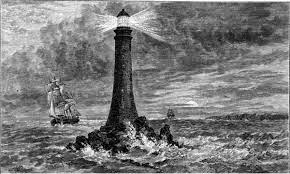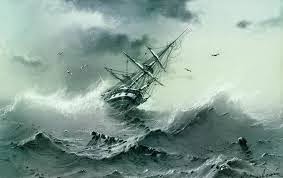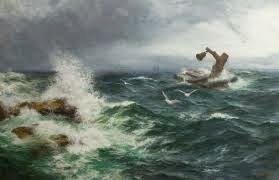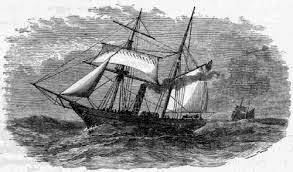You are going to go through CRITICAL AND LINE BY LINE ANALYSIS OF THE INCHCAPE ROCK Robert Southey. To score better in examinations, the role of critical and line by line analysis is immense, A learner has to practise rigorously to master the topic and put in the examination meticulously without making any mistakes. Critical and line by line analysis help to cope with the pattern and dos and dont’s that a learner desires to achieve. Here in the lessons critical AND LINE BY LINE ANALYSIS OF THE INCHCAPE ROCK Robert Southey experts made it sure that they come up with the design and blueprint needed.So Let us find out CRITICAL AND LINE BY LINE ANALYSIS OF THE INCHCAPE ROCK Robert Southey.
ABOUT THE POET

Robert Southey
Born – August 12, 1774 Bristol England.
Died – 21 march 1843 England.
He was a poet and laureate to Romantic
school
Famous works : –
The fall of Robes Pierre (17940
Joan of Arc – An epic Poem (1796)
After Blen Heim (1798)
Devil’s thoughts (1799)
BACKGROUND OF THE INCHCAPE ROCK

ABOUT THE INCHCAPE ROCK

THE INCHCAPE Rock – a Ballad
STANZA WISE EXPLANATION
STANZA – 1
Poetic Devices in use
1)
Repetition – ‘No stir’
2) Antithesis – No stir in the air, no stir in the sea
3)
Anaphora –
STANZA – 2
Poetic Devices in use
1)
Repetition – ‘So little’
2)
Antithesis – So little they rose, so little
they fall
3)
Personification – Here waves are referred
as ‘They’
and his benevolent deed of placing the warning bell over Inchcape Rock. He placed it on a buoy.

Poetic Devices in use
1) Inversion –
STANZA – 4
Alliteration – Surge’s swell, then they
(line -3)
Anaphora – And then
was a bright sunny day. Everything of nature seemed to be mirthful on that day.
The sea birds are screaming while flying around and the sounds created by them
were filled with joy.
Symbolism – heaven (meaning sky )
Personification – The sun is described as
‘gay’
Ralph’s approach to the Inchcape Rock. The buoy of the Inchcape bell is visible
like a darkness speck on the green ocean. Sir Ralph walked over his deck and
set his eye or the buoy.

Inversion – A darker speck on the ocean
green.
pleasant spring weather and how he had the wicked intention. Sir Ralph is found
at the utmost peak of mirth. He is singing and whistling. But this mirth is
actually his wickedness.
Onomatopoeia – ‘whistle’
Alliteration – ‘his heart’
Ralph. He looked intently at the Inchcape Rock. Then he ordered his men to take
him to the Inchcape Rock by boat. He made up his mind of bringing an end to the
benevolent work of Abbot of Aber Brothok
Inversion – quoth he, ‘my men, put out the
boat
Anaphora – And row
Ralph got on the boat which the boatmen rowed and when the boat reached the
Inchcape Rock. Sir Ralph cut the Inchcape bell.
Inversion – And to the Inchcape Rock they
go.

Sir Ralph over this. With a gurgling sound the bell sank down. There had been
bubbles while the bell drowned. Sir
Ralph said that moon would ever thank Abbot of Abber Brothok after that act.
Onomatopoeia – gurgling
Inversion – i) ‘Down sank the bell
with a gurgling sound”
rover has become rich by looting a lot of the ships and now he is heading
towards the shore of Scotland.
Alliteration – Scotland’s shore
ill weather. The sun is not visible as because of hazy sky. Throughout the day
wind had blown like a storm. At the evening the wind died away signifying the
approach of a horrible storm.

is so dark that they cannot see anything. Sir Ralph is optimistic that soon
there will be a change in the weather in positive. He assumes that it was down
and moon will soon be seen.
Inversion i)
on the deck, the Rover takes his stand
land.
sailors stated that he could hear the breaker’s sound. This signifies that
shore is very near. He further states that he does not have any idea where they
stand with the ship. But he had strong wish if he could hear the warning sound
of the Inchcape bell.
Inversion – “Now where we are we cannot
tell”.
high waves they heard no sound. In spite of the fact that the wind has fallen
they drifted along and they received the shivering shock. Immediately they understood
that their ship had hit the Inchcape rock. They called for the Christ as the
son of God.
Alliteration – ‘Though the’, ‘Shivering
shock’, “Till the”

tore his hair in frustration and cursed himself in despair. Water waves started
to enter the ship and started to engulf the ship. The ship started to drown
beneath the high tide.
Alliteration – ‘his hair’, ‘the tidy’
Anaphora – The waves
hallucinations. In his dying fear as if he could hear the ringing sound of the
Inchcape Bell of Abbot of Aber Brothok. He felt as if the death bell was rung
by Devil himself.
Inversion – One dreadful sound could the
Rover hear.
STRUCTURE OF THE POEM
poem “The Inchcape Rock”, is a poem of 68 lines divided into 17 stanzas of 4
lines each. It follows the rhyme scheme of aabb throughout the poem. We find
extensive use of Alliteration, Inversion, Imagery, Anaphora and personification
in the poem.





thankss…it helped much to finish my litrature project
same here 😀
i am ayush
same here
Thanks it helped me as my exams are tomorrow
Me too 🙂
Same here 🙂
Mee to
Thank you very much
this article was amazing . it helped me to prepare for my english presentation and leaded me to 15/15 . thnx alot
It helped me for my examination. Love this site
Thanks, I have a exam coming up , it helped a lot
it helped me…..it was needed indeed!!!…tysm
it helped me…..it was needed indeed!!!…tysm
But why was the ocean green…and why was the speck on the ocean dark??
But why was the ocean green…and why was the speck on the ocean dark??
The ocean was green with algae as it is near Scotland and small specks which is the rock here appear dark
Helped me a lot to complete my english project but has some spelling mistakes.